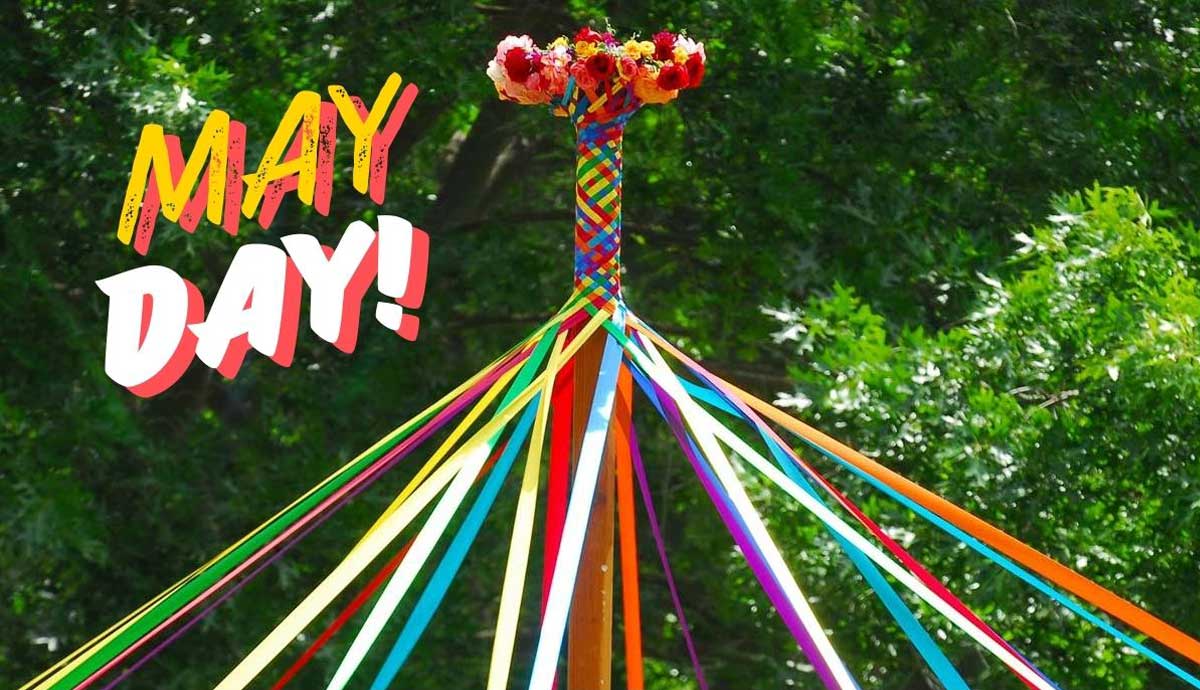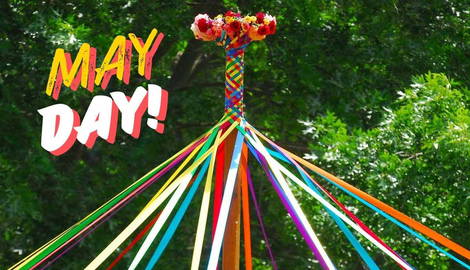
Mayday, also commonly known as Labor Day, or International Workers’ Day, is a public holiday for many that takes place on the 1st of May each year. Celebrated across parts of Europe, the United States, Canada and Asia, this day of celebration has a long history connected to the celebration of spring, the advancement of warmer weather, and the coming together of communities. We track the long history of Mayday and spring celebrations, which date as far back as ancient times.
Rites of Spring

Some of the earliest May celebrations took place in ancient Rome, most notably The Floralia, or the Festival of Flora, a tribute to the goddess of spring, flowers and fertility which took place from the 28th of April to the 3rd of May. Along with civilized events including theatre and athletic games, Romans also carried out raucous affairs such as throwing vegetables at one another and releasing wild hares and deer into unsuspecting crowds.
The Beltane Festival

The Beltane Festival was a Gaelic celebration for the warmer months of spring and summer, dating back to at least as far as the early medieval period. The festival typically involved fire displays and bonfires which communities believed had special protective powers, along with the adorning of doors and windows with wild flowers. While the festival waned in popularity during the early 20th century, some have resurrected Beltane in recent years as part of Pagan celebrations that connect with the forces of the natural world.
Mayday

The 1st of May emerged as a Mayday celebration during the medieval period throughout the British Isles, when a series of eccentric community-led activities took place. A random ‘lord and lady’ would be picked out from the crowd to rule the town for the entire day. Eventually over time the tradition changed to involve just the ‘lady’, who became known as the ‘May Queen.’ During the Victorian era the May Queen was typically a young girl, who wore a white dress and a floral crown, who came to embody the innocent and hopeful beauty of spring, surrounded by a ‘court’ of other girls dressed in similar attire. Meanwhile, the practice of dancing around the maypole with long ribbons that has become so synonymous with Mayday today first emerged out of 14th century Wales, before being adopted across much of England and beyond.
International Workers’ Day (or Labor Day)

In 1891, the first day in May was selected during the Marxist International Socialist Congress in Paris to be International Workers’ Day, a time when workers could unite and bring together industrial action. The first protest that took place was on the 1st of May 1886, when many workers went on strike across the United States, demanding an eight-hour working day. They chose this date because it was most commonly the start of the accounting year for American businesses. The event ended tragically with violence and several deaths, and became known as The Haymarket Affair.
Across the world, the shock of the event led the date of May 1st to become a time for socialist parties and trade unions to carry out peaceful protests, arguing for the 8-hour working day. Once this battle was finally successfully won for approximately 200,000 workers, the day became a special date when workers would stage strikes and protests for all kinds of different rights. People from a range of professional backgrounds would take the day off as an act of resistance and solidarity.
Continuing Relevance Today

The date remained a popular time for protest amongst socialists across the US, but as the Cold War progressed, the date’s association with socialism became politically fraught, prompting International Workers’ Day, (or Labor Day as it is now commonly known), to be moved to the first Monday in September throughout the US and numerous other nations, a practice which continues to this day. However, many other nations held on to the 1st of May as Labor Day, including the United Kingdom. Meanwhile, Mayday was introduced as a Bank Holiday in the United Kingdom by Michael Foot, the Labor Employment Secretary in 1978, and it remains in place across the UK and Ireland today, when traditional celebrations continue to be carried out in many towns and villages, including, of course, the maypole dance.










